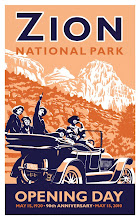
Our last intrepid explorer, Catherine Levering, remained a mystery to us for a long time. We knew that she was a dancer living in Los Angeles, and she had lived in Salt Lake City at sometime. In some ways this was strange since we have always believed that the scrapbooks had belonged to her. All the articles in the scrapbook mention her, many only her. We didn't have a lot of access to Los Angeles newspapers and her name only appeared in the local search able newspapers a couple of times. Who she was and how she became a part of this group was beyond what sources we had at our fingertips. That changed a few months ago when the University of Utah's online newspaper archive began to include the Salt Lake Telegram. We found out her mother's name in an article there mentioning that she was leaving Salt Lake City to study music in California. That was the key that opened up the floodgates. Catherine had been studying violin and dance in Salt Lake City for several years and had been in many local musical productions. Throughout the production of our book, John and I had assumed that Catherine was the same age as the other girls on the trip, but as information slowly opened up, we were surprised to discover that Catherine was only 14 years old in 1920. I found it hard to believe at first. Why would they include a young teenager a good 6 years younger than the other girls? However, one thing after another proved that it was so.
Catherine was born in Colorado in 1906. Her father died soon after, and her mother, Cordelia, moved to Salt Lake City. In Salt Lake City, Catherine's talent for the violin manifested itself early on, and she made rapid progress in her studies. She also took dancing lessons. Catherine's mother took her to Los Angeles when she was 13 years old to continue her studies. There Catherine enrolled in the Denishawn School of dance and the Zoellner Conservatory of Music. By the time she was 17, she had graduated and was teaching dance at a Los Angeles high school and had filled numerous motion picture contracts. In 1923, she went back east to study with the famous violinist Leapold Auer. She also spent time at the Peabody Conservatory and Johns Hopkins University. By 1931, she had opened her own music and dance studio in Reno, Nevada, and then she spent a couple of years back in Salt Lake City teaching. Here she met and married Donald Bjelke. They moved to the Bay Area in California in 1933, where she stayed for the rest of her life. Catherine continued to teach in California and was a member of the Oakland Symphony.
She had two children and died in 1989.

 Here is the close up. In the front is Mildred Gerrard. Holding the reins behind Mildred is Nell Creer, and on the rump is Anna Widtsoe. I had to laugh when I saw their faces. It is so typical of their personalities. I just had to laugh when I saw the look of pure joy on Anna's face. Mildred looks like she is not sure that that horse is safe. I love this photo! I am so glad that the quality of these photos are so great that such details have been captured.
Here is the close up. In the front is Mildred Gerrard. Holding the reins behind Mildred is Nell Creer, and on the rump is Anna Widtsoe. I had to laugh when I saw their faces. It is so typical of their personalities. I just had to laugh when I saw the look of pure joy on Anna's face. Mildred looks like she is not sure that that horse is safe. I love this photo! I am so glad that the quality of these photos are so great that such details have been captured.















